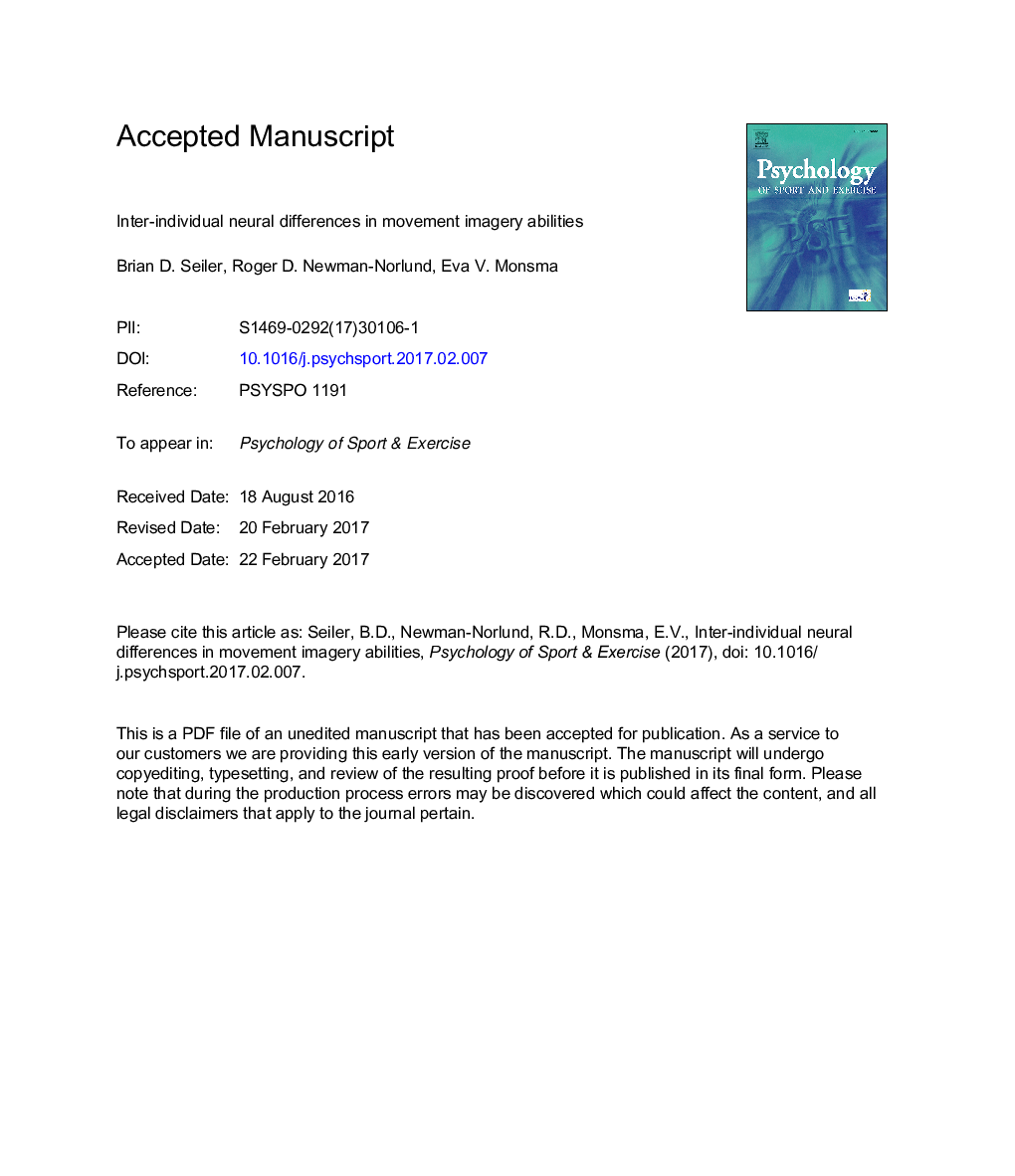| کد مقاله | کد نشریه | سال انتشار | مقاله انگلیسی | نسخه تمام متن |
|---|---|---|---|---|
| 5036434 | 1472097 | 2017 | 43 صفحه PDF | دانلود رایگان |
عنوان انگلیسی مقاله ISI
Inter-individual neural differences in movement imagery abilities
ترجمه فارسی عنوان
اختلاف عصبی بین فردی در توانایی های تصویربرداری حرکتی
دانلود مقاله + سفارش ترجمه
دانلود مقاله ISI انگلیسی
رایگان برای ایرانیان
کلمات کلیدی
پرسشنامه تصویربرداری جنبش 3، توانایی تصویر تصویربرداری رزونانس مغناطیسی عملکردی، تصاویر متحرک،
موضوعات مرتبط
علوم پزشکی و سلامت
پزشکی و دندانپزشکی
ارتوپدی، پزشکی ورزشی و توانبخشی
چکیده انگلیسی
Building on mounting evidence distinguishing the neurological basis of different movement imagery abilities (visual versus kinesthetic), this study compared brain activity (i.e., blood flow changes) through functional magnetic resonance imaging elicited by movement imagery in participants self-reporting good and poor imagery abilities with the Movement Imagery Questionnaire-3. Participants also completed the Vividness of Movement Imagery Questionnaire-2. Method: Thirty-seven females (good imagery ability = 18; poor imagery ability = 19) were randomly presented with four experimental conditions (i.e., Kinesthetic, Internal Perspective, External Perspective and Rest) counterbalanced for condition, during three separate 11-min functional brain scans. Results: Kinesthetic and visual (internal/external) subscale mean differences of the Vividness of Movement Imagery Questionnaire-2 favored good imagers and high Movement Imagery Questionnaire-3 inter-scale correlations evidenced convergent validity. As in prior published work, kinesthetic, internal, and external visual imagery elicited distinct patterns of brain activation relative to rest. Overall, the patterns of brain activity in the good and poor imager groups were remarkably similar, indicating that they both generally relied on a similar brain network during movement imagery. Conclusions: Contrary to processing efficiency hypotheses (i.e., neural efficiency hypothesis) we report that during kinesthetic imagery and external visual imagery only, good imagers actually activated a greater number of spatially distinct cortical sites than did poor imagers. Furthermore, research is needed to fully characterize the neural signature of movement imagery in good and poor imagers. Such research is critical to the appropriate creation and proper application of neuroscience-inspired movement imagery-based learning interventions in healthy and clinical populations.
ناشر
Database: Elsevier - ScienceDirect (ساینس دایرکت)
Journal: Psychology of Sport and Exercise - Volume 30, May 2017, Pages 153-163
Journal: Psychology of Sport and Exercise - Volume 30, May 2017, Pages 153-163
نویسندگان
Brian D. Seiler, Roger D. Newman-Norlund, Eva V. Monsma,
